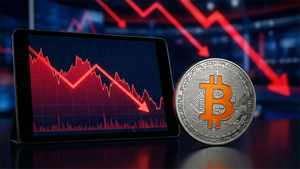The Best Way to Invest in Gold Is...

Gold prices repeatedly reached new highs in 2024 and are again nearing record levels. Multiple factors, including rising geopolitical tensions and the consequent demand for safe-haven assets, drive this upward trend. Given this scenario, many investors are contemplating adding gold to their portfolios. A range of options exists, each with unique characteristics suited to different investment goals and risk tolerances. The key question then becomes: What is the optimal strategy and instrument for gold investment in the current market?
Investing in Physical Gold: The Tangible Approach
Investing in physical gold (bullion, coins, jewelry) is attractive during economic uncertainty due to its historical role as a store of value. Central banks increasing reserves and global tensions further drive demand and price appreciation. However, storage, security, and lower liquidity are drawbacks that must be considered. High transaction costs and premiums can erode gains, especially with jewelry, where fabrication premiums don't translate into resale value.
Investment vehicles like the Sprott Physical Gold Trust (NYSEARCA: PHYS) present an alternative to direct physical gold ownership, potentially mitigating the risks associated with holding gold bullion. These trusts, which are designed to track the price of physical gold, hold allocated gold bullion in secure vaults, offering a level of transparency and security that can be challenging for individual investors to achieve.
While investors own shares in the trust rather than the gold itself, these trusts provide a stronger connection to physical gold than many other market-based options.
Gold Mining Stocks: Leverage and Growth Potential
Investors looking for higher returns and exposure to the gold sector's equity performance can consider investing in gold mining stocks. The value of mining companies is inherently tied to the price of gold but is also influenced by company-specific operational and financial factors. This strategy provides indirect exposure to gold prices.
Gold mining stocks can outperform the price of gold, offering investors leveraged returns. These stocks have historically amplified gains and losses in the price of gold. Many established gold mining companies also offer dividends, providing an additional income stream beyond potential capital appreciation. Investing in mining companies can also provide exposure to the growth potential of these businesses through exploration, new project development, and operational improvements.
Conversely, investing in gold mining stocks carries a higher risk profile compared to direct physical gold ownership or gold-backed trusts. Mining operations are inherently subject to a range of operational risks, including mining accidents, geological uncertainties, and unforeseen challenges in extraction and processing.
Moreover, geopolitical risks in mining jurisdictions can significantly impact company valuations and operational continuity. Gold mining stocks, being equities, also exhibit a correlation with broader stock market trends. This means that their performance can be influenced by overall market sentiment and economic cycles, potentially diluting their effectiveness as a pure hedge against economic downturns specifically related to gold.
Finally, the profitability of gold mining companies is acutely sensitive to operating costs, encompassing energy prices, labor expenses, and material costs. Fluctuations in these input costs can significantly impact mining company earnings, adding another layer of risk beyond the volatility of gold prices themselves. Prominent examples of publicly traded gold mining companies include Barrick Gold Corporation (NYSE: GOLD), Newmont Corporation (NYSE: NEM), and Agnico Eagle Mines Limited (NYSE: AEM).
Gold ETFs: A User-Friendly Path to Precious Metal
Gold ETFs provide investors with a simple and accessible way to gain exposure to the gold market. These funds offer diversification and liquidity benefits that often exceed those of direct physical ownership. The most common are those that provide exposure to gold miners. ETFs like the VanEck Gold Miners ETF (NYSEARCA: GDX) hold a basket of gold mining stocks, offering a leveraged play on the gold sector.
These funds provide exposure to large-cap and small-cap mining companies, allowing investors to participate in the potential growth of the gold mining industry. Other options include leveraged and inverse ETFs, which aim to multiply or invert the returns of the underlying gold index. However, these instruments come with higher risk and complexity, making them more suitable for experienced traders.
Similar to Sprott, physically-backed gold ETFs, like the SPDR Gold Trust (NYSEARCA: GLD), are designed to mirror the spot price of gold, holding physical bullion in secure vaults. This framework allows investors to track the price fluctuations of the underlying asset directly without the difficulties of physical storage and security. With shares traded on major stock exchanges, these ETFs provide liquidity and easy access through standard brokerage accounts. Investors can quickly buy and sell shares, taking advantage of market changes without the delays and transaction costs associated with physical bullion.
While there is always some risk associated with the ETF issuer and custodian holding physical gold, this is generally considered low for established and reputable ETF providers. ETFs' significant holdings of physical gold influence overall market dynamics by contributing to the demand for physical bullion. The growing investor interest in gold exposure through ETFs has likely contributed to the recent increase in gold stockpiles within COMEX-approved warehouses, which illustrates the connection between the paper and physical markets.
Other Gold Investment Options
Beyond the primary methods, alternative avenues for gold investment exist. Gold streaming and royalty companies, such as Royal Gold, Inc. (NASDAQ: RGLD) and Franco-Nevada Corporation (NYSE: FNV), offer a different approach. These companies finance mining projects in exchange for a percentage of future gold production or revenue, presenting a distinct risk and reward profile compared to operating mining companies directly.
For sophisticated investors and traders, gold futures and options contracts provide leveraged exposure to gold price movements. However, these instruments are generally not recommended for beginner investors due to their complexity and inherent leverage.
Golden Opportunities: Finding Your Right Fit
Gold investment strategies should be tailored to individual circumstances, including risk tolerance, investment goals, time horizon, and available capital. Beginner investors often find gold-backed ETFs the easiest way to enter the gold market. Investors with a higher risk appetite and growth-oriented objectives may prefer gold mining stocks or mining ETFs. Physical gold may appeal to those prioritizing tangible assets and long-term wealth preservation despite the logistical challenges. Regardless of the method, gold remains attractive for portfolio diversification and potential hedging during economic uncertainty. Investors should carefully consider their circumstances and risk profiles when choosing among the diverse gold investment options to find the best fit for their financial goals.
Where Should You Invest $1,000 Right Now?
Before you make your next trade, you'll want to hear this.
MarketBeat keeps track of Wall Street's top-rated and best performing research analysts and the stocks they recommend to their clients on a daily basis.
Our team has identified the five stocks that top analysts are quietly whispering to their clients to buy now before the broader market catches on... and none of the big name stocks were on the list.
They believe these five stocks are the five best companies for investors to buy now...
More News
View More




Recent Quotes
View MoreQuotes delayed at least 20 minutes.
By accessing this page, you agree to the Privacy Policy and Terms Of Service.